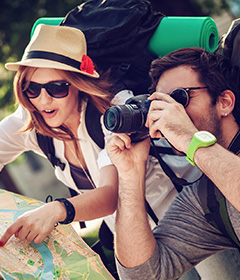The majestic Himalayas beckon adventurers from across the globe, offering unparalleled trekking experiences amidst towering peaks and ancient cultures. From the iconic Everest Base Camp trek to the diverse landscapes of the Annapurna Circuit, these mountain ranges provide a playground for hikers seeking both physical challenge and spiritual enlightenment. As you ascend through rhododendron forests, cross glacial moraines, and traverse high-altitude passes, you’ll encounter a world where nature reigns supreme and human resilience is tested to its limits.
Embarking on a Himalayan trek requires meticulous planning, robust gear, and a deep respect for the environment and local communities. Whether you’re a seasoned mountaineer or a first-time high-altitude trekker, the Himalayas offer routes that cater to various skill levels and interests. Let’s delve into the essentials of planning and executing a memorable Himalayan trekking adventure, ensuring you’re well-prepared for the journey of a lifetime.
Himalayan trekking routes: from everest base camp to annapurna circuit
The Himalayas boast an array of trekking routes that cater to different preferences and fitness levels. The Everest Base Camp trek stands as the crown jewel, offering trekkers the chance to walk in the footsteps of legendary mountaineers and gaze upon the world’s highest peak. This 12-14 day journey takes you through Sherpa villages, past ancient monasteries, and across the infamous Khumbu Icefall, culminating in the awe-inspiring view of Everest from Kala Patthar.
For those seeking a more diverse landscape, the Annapurna Circuit presents a compelling alternative. This 14-21 day trek encircles the Annapurna massif, traversing through subtropical forests, arid landscapes reminiscent of Tibet, and the challenging Thorong La pass at 5,416 meters. The circuit’s varied terrain and cultural encounters make it a favourite among seasoned trekkers.
Other notable routes include the Langtang Valley trek, known for its stunning rhododendron forests and Tibetan-influenced culture, and the Manaslu Circuit, which offers a less crowded alternative to the Annapurna region. Each route has its unique charm and challenges, catering to different trekking styles and preferences.
Choosing the right trek depends on your fitness level, available time, and personal interests. Consider factors such as altitude gain, daily walking distances, and cultural experiences when selecting your Himalayan adventure.
Essential gear and equipment for High-Altitude himalayan treks
Proper gear can make or break your Himalayan trekking experience. The extreme altitudes and unpredictable weather conditions demand specialized equipment designed to withstand harsh mountain environments. Your packing list should include items that prioritize warmth, durability, and versatility.
Altitude-specific clothing: layering techniques for extreme conditions
Mastering the art of layering is crucial for comfort in the ever-changing Himalayan climate. Start with a moisture-wicking base layer to keep your skin dry. Add an insulating mid-layer, such as fleece or down, for warmth. Top it off with a waterproof and breathable outer shell to protect against wind and precipitation. Don’t forget accessories like warm gloves, a beanie, and a buff to protect exposed skin.
Trekking poles and footwear: navigating varied terrain
Your feet and legs bear the brunt of the trek, making appropriate footwear essential. Invest in well-fitted, waterproof hiking boots with sturdy ankle support. Break them in before your trip to avoid blisters. Trekking poles provide stability on uneven terrain and reduce strain on your knees during steep descents. Choose lightweight, collapsible poles for easy transportation.
Camping equipment: Four-Season tents and sleeping systems
If your trek involves camping, you’ll need gear that can withstand extreme conditions. A four-season tent offers protection against strong winds and heavy snowfall. Pair it with a high-quality sleeping bag rated for temperatures well below freezing and a sleeping pad for insulation from the cold ground. These items ensure you’ll rest comfortably after long days of trekking.
High-altitude medical kit: addressing altitude sickness and emergencies
A comprehensive medical kit is non-negotiable for high-altitude treks. Include medications for altitude sickness, such as Diamox, as well as general first-aid supplies. Familiarize yourself with the symptoms of acute mountain sickness (AMS) and know how to use your medical kit effectively. Consider packing a portable oxygen canister for emergencies, especially on remote treks.
Acclimatisation strategies for himalayan altitudes
Proper acclimatisation is crucial for a safe and enjoyable Himalayan trek. The human body needs time to adapt to reduced oxygen levels at high altitudes. Rushing this process can lead to altitude sickness, which can be dangerous and potentially life-threatening. Implementing effective acclimatisation strategies is essential for all trekkers, regardless of fitness level or previous high-altitude experience.
Gradual ascent techniques: adapting to reduced oxygen levels
The golden rule of high-altitude trekking is to ascend slowly. A generally accepted guideline is to increase your sleeping altitude by no more than 300-500 meters per day once you’re above 3,000 meters. This gradual approach allows your body to produce more red blood cells, enhancing its ability to absorb oxygen from the thin air. Some treks incorporate a “climb high, sleep low” strategy, where you ascend to a higher altitude during the day but return to a lower elevation to sleep, further aiding acclimatisation.
Rest days and acclimatisation hikes: balancing progress and adaptation
Incorporating rest days into your itinerary is vital for proper acclimatisation. These days allow your body to adjust to the current altitude before pushing higher. However, “rest” doesn’t mean inactivity. Short acclimatisation hikes to slightly higher elevations, followed by a descent to sleep, can boost your body’s adaptation process. These hikes also offer opportunities for stunning views and photography without the pressure of covering long distances.
Hydration and nutrition at altitude: fueling for High-Elevation treks
Maintaining proper hydration is essential at high altitudes. The dry air and increased respiratory rate lead to faster fluid loss. Aim to drink at least 3-4 liters of water daily, even if you don’t feel thirsty. Electrolyte supplements can help maintain proper fluid balance. Nutrition is equally important; your body burns more calories at altitude. Focus on carbohydrate-rich foods for energy and include protein for muscle recovery. Avoid alcohol and minimize caffeine intake, as both can exacerbate dehydration.
Listen to your body and be prepared to adjust your itinerary if needed. Pushing through symptoms of altitude sickness can have serious consequences. Remember, the mountain will always be there – your safety comes first.
Logistics and permits for himalayan trekking
Navigating the logistics of a Himalayan trek can be as challenging as the physical journey itself. Understanding the permit requirements, transportation options, and ethical considerations for hiring local support is crucial for a smooth and responsible trekking experience.
Trekking permits and conservation area fees: navigating bureaucracy
Most Himalayan treks require permits, which vary depending on the region and route. For example, trekking in Nepal’s Sagarmatha National Park (Everest region) requires a TIMS (Trekkers’ Information Management System) card and a national park entry permit. The Annapurna region requires an ACAP (Annapurna Conservation Area Project) permit. Research the specific requirements for your chosen trek well in advance, as some permits must be obtained in major cities before heading to the trailhead.
Hiring local guides and porters: ethics and practicalities
Employing local guides and porters not only eases your physical burden but also contributes to the local economy. When hiring, prioritize agencies that adhere to ethical practices, ensuring fair wages and proper equipment for their staff. A knowledgeable guide can enhance your trekking experience by sharing insights into local culture, identifying flora and fauna, and ensuring you stay on the right path. Porters can carry the bulk of your gear, allowing you to trek with a lighter daypack.
Transportation to trailheads: from kathmandu to remote starting points
Reaching your trek’s starting point often involves a combination of transportation methods. Many treks begin with a flight from Kathmandu to smaller airports like Lukla (for Everest region treks) or Pokhara (for Annapurna treks). From there, you might take a jeep or bus to the actual trailhead. Be prepared for potential delays due to weather, especially for mountain flights. Building buffer days into your itinerary can help absorb these delays without disrupting your entire trek.
Cultural immersion: sherpa villages and buddhist monasteries
Trekking in the Himalayas offers more than just stunning natural scenery; it’s an opportunity for deep cultural immersion. The regions you’ll traverse are home to diverse ethnic groups, each with their unique traditions, languages, and way of life. The Sherpa people of the Khumbu region, renowned for their mountaineering skills and Buddhist faith, are perhaps the most famous.
As you trek through remote villages, you’ll encounter traditional stone houses adorned with prayer flags, yak herds grazing on high-altitude pastures, and the warm hospitality of local teahouses. Many routes pass by ancient Buddhist monasteries perched on mountainsides, offering trekkers a glimpse into the spiritual heart of the Himalayas.
Take time to visit these monasteries, observing morning prayers or spinning prayer wheels for good fortune. In Tengboche, on the Everest Base Camp trek, you can witness monks performing their daily rituals against the backdrop of Ama Dablam. The Annapurna Circuit offers encounters with both Hindu and Buddhist cultures, showcasing the religious diversity of Nepal.
Respect local customs and dress modestly when visiting religious sites. Always ask permission before photographing people or entering homes. These small gestures of respect go a long way in fostering positive interactions with local communities.
Environmental conservation in the himalayas: responsible trekking practices
The increasing popularity of Himalayan trekking brings with it the responsibility to protect these fragile mountain ecosystems. As a trekker, you play a crucial role in minimizing your environmental impact and supporting conservation efforts.
Adhere to the principles of Leave No Trace: pack out all your trash, use biodegradable soap for washing, and stick to established trails to prevent erosion. Choose accommodations and trekking agencies that prioritize sustainability, such as those using solar power or implementing waste management systems.
Consider participating in organized clean-up treks or supporting local conservation initiatives. The Sagarmatha Pollution Control Committee in the Everest region, for example, works tirelessly to manage waste and protect the environment. By making conscious choices and educating fellow trekkers, you can help ensure that the Himalayas remain pristine for future generations to enjoy.
As you plan your Himalayan trekking adventure, remember that preparation is key. From selecting the right route and gear to understanding acclimatisation strategies and cultural etiquette, every aspect of your journey contributes to a safe, enjoyable, and responsible trekking experience. The Himalayas offer not just a physical challenge, but an opportunity for personal growth, cultural exchange, and deep connection with nature. With proper planning and a respectful approach, your Himalayan trek will undoubtedly be an unforgettable journey of discovery.


